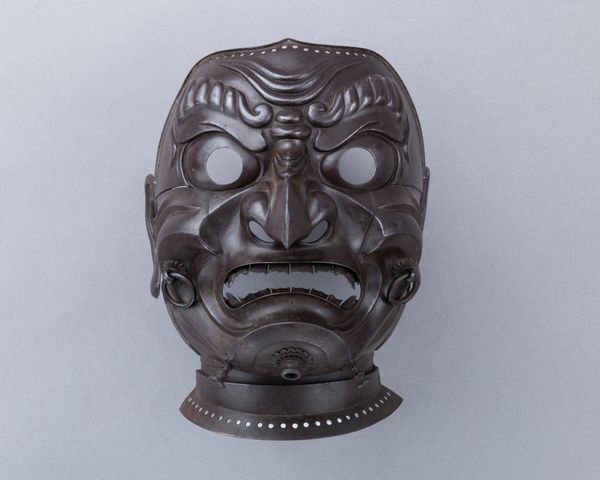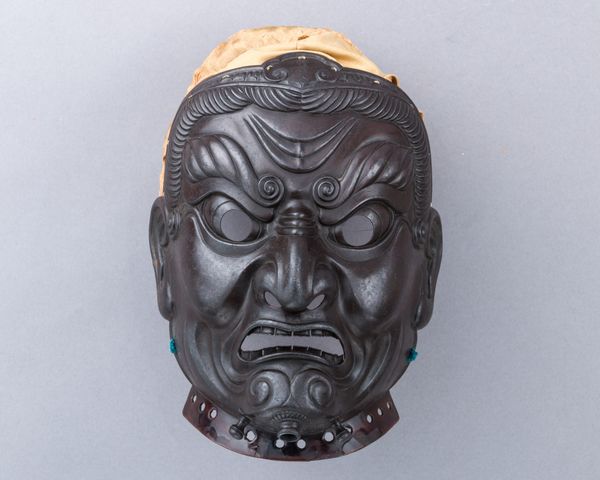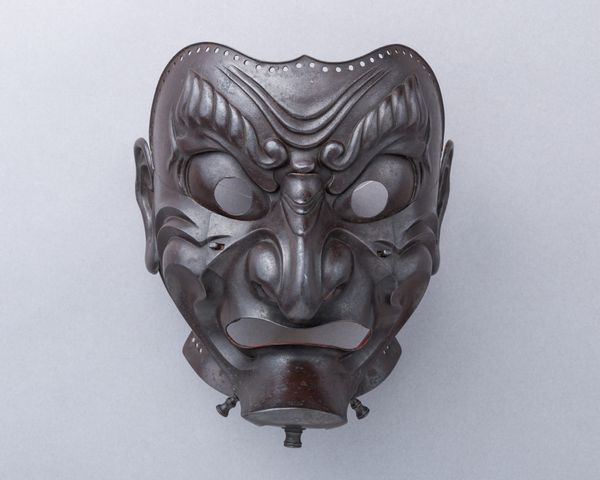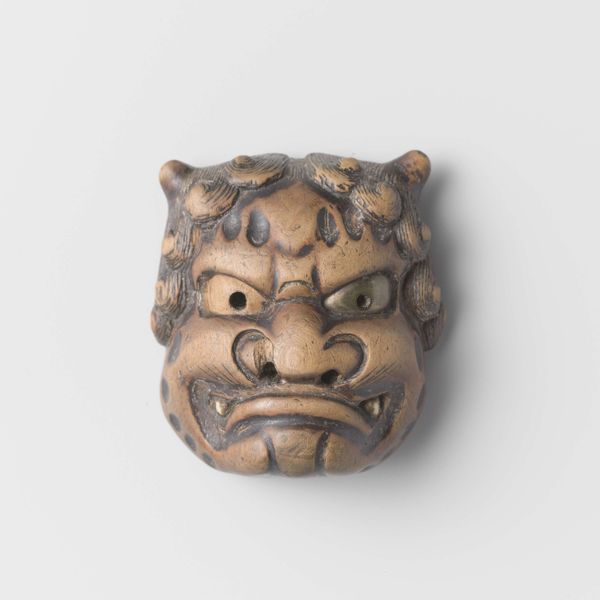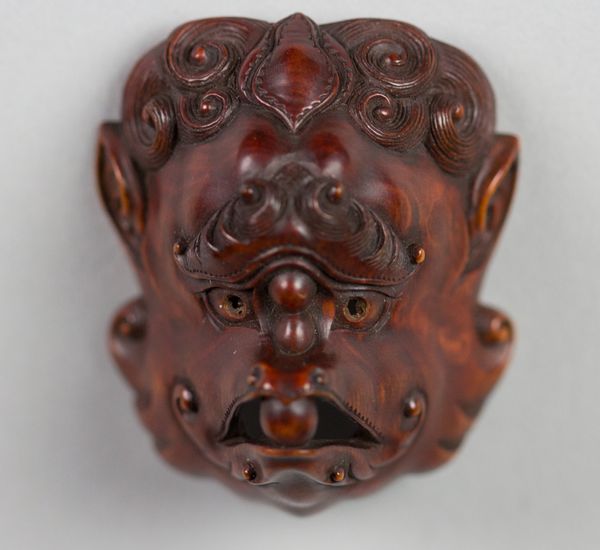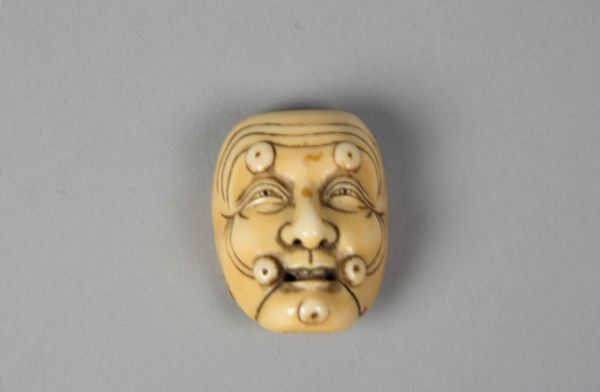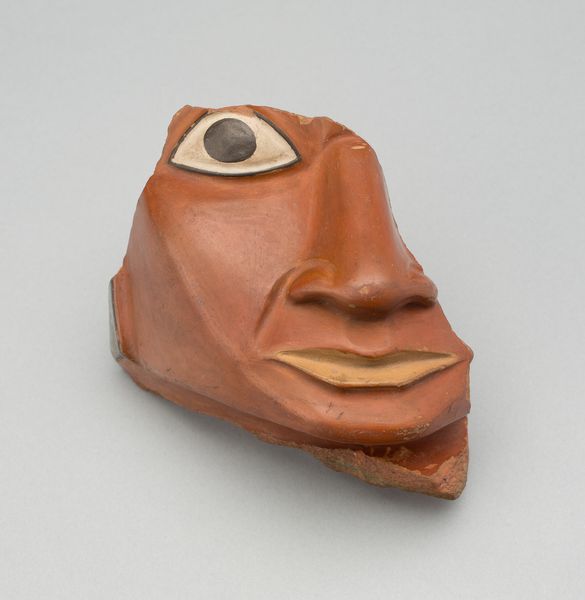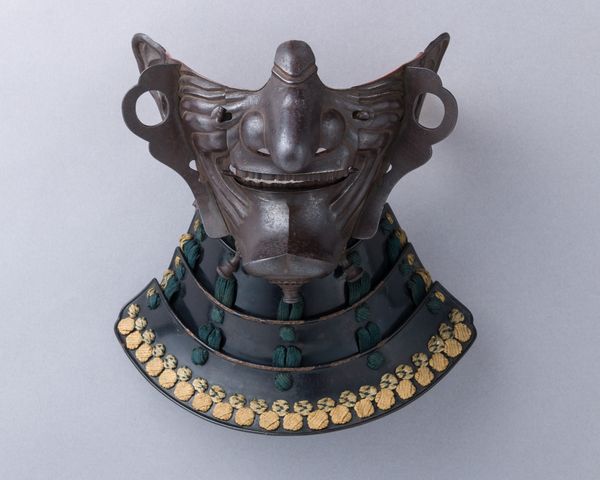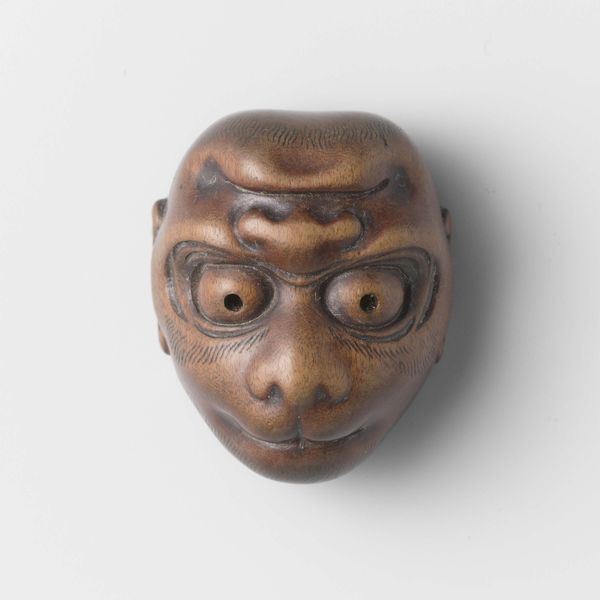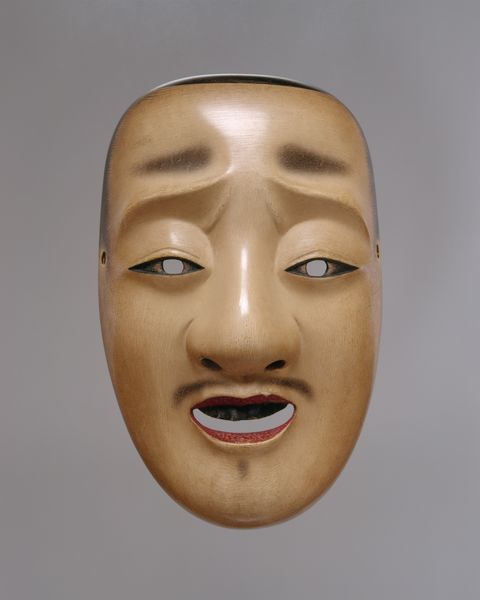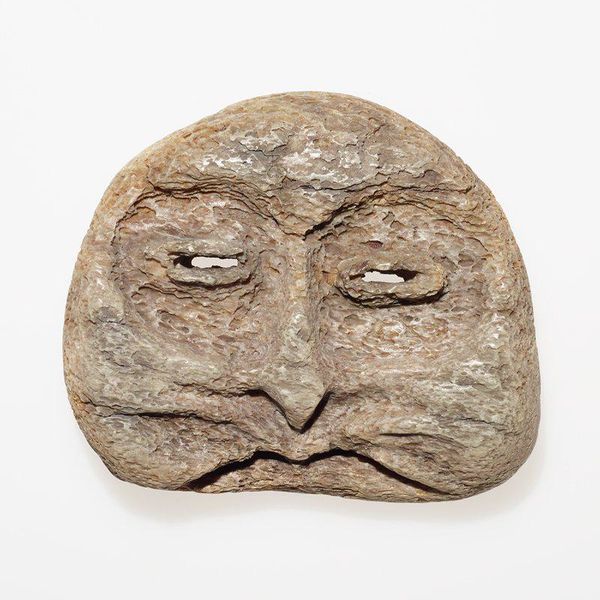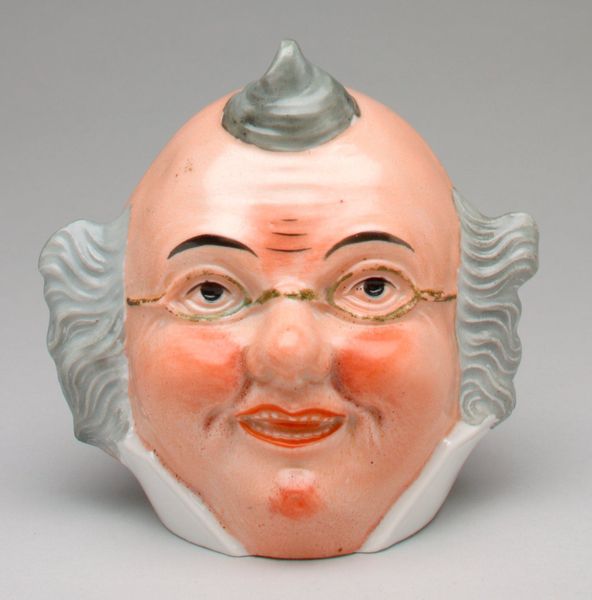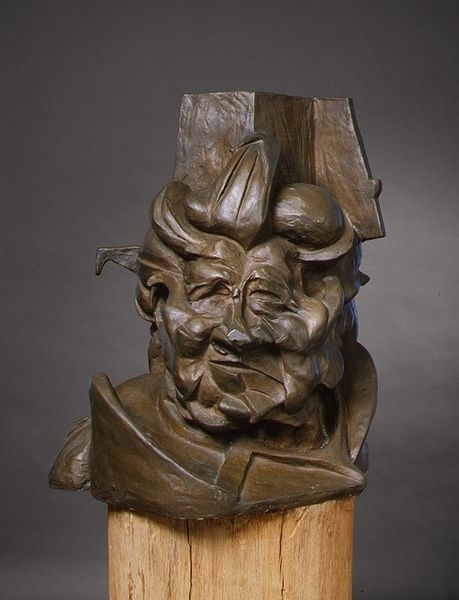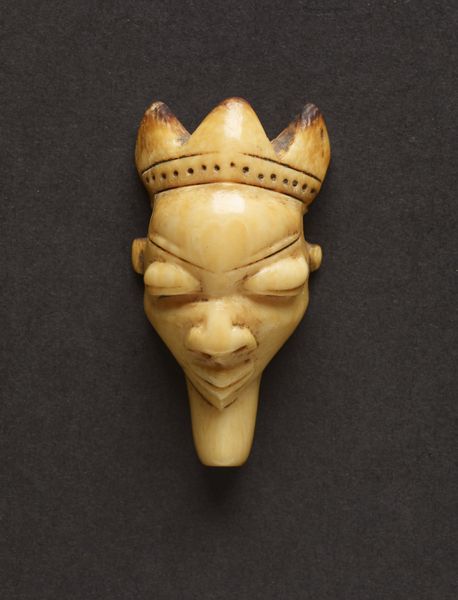
Mask (Sōmen) in the Shape of a Grimacing Man 1701 - 1750
0:00
0:00
carving, sculpture, wood
#
portrait
#
medieval
#
carving
#
asian-art
#
caricature
#
japan
#
sculpture
#
wood
#
armor
#
facial portrait
Dimensions: H. 9 in. (22.9 cm); W. 6 13/16 in. (17.4 cm); D. 3 13/16 in. (9.7 cm); Wt. 12.2 oz. (346 g)
Copyright: Public Domain
Editor: This is a "Mask (Sōmen) in the Shape of a Grimacing Man," created by Myōchin Munesuke sometime between 1701 and 1750. It’s a wood carving. It’s kind of unnerving, and seems to suggest a certain weight to the materials, what does the mask convey to you? Curator: Its materiality is the first thing I notice. This isn’t just wood; it’s *worked* wood. Consider the labour: carving to suggest a grimace, shaping wood to form armour. The object presents itself not as art, but as product of a specific system. Does the grimace speak of the hardships faced in its creation, or those it was designed to protect from? Editor: So you’re thinking about the labour and social context surrounding its production, not just its artistic value? Curator: Exactly! This isn't just about aesthetics. Think of the class structure required to make an object like this, the artisan's relationship to the samurai, the demand that drove this kind of detailed, careful production. How did the act of creation shape the mask's meaning and utility? What level of training would be required? Were such artisans venerated? Editor: That's a really interesting point. I hadn't considered how the means of production factored into its cultural significance beyond just the finished object itself. Curator: We're talking about material culture; what did the making of an artwork mean to people? Can you separate it from its socio-economic roots, and should you even try? Editor: I see what you mean! Looking at art this way, focusing on the process and the societal factors, brings a whole new level of appreciation. Thank you. Curator: Absolutely! Art and labour go hand in hand, even if history has preferred to ignore the second of that pairing.
Comments
No comments
Be the first to comment and join the conversation on the ultimate creative platform.
